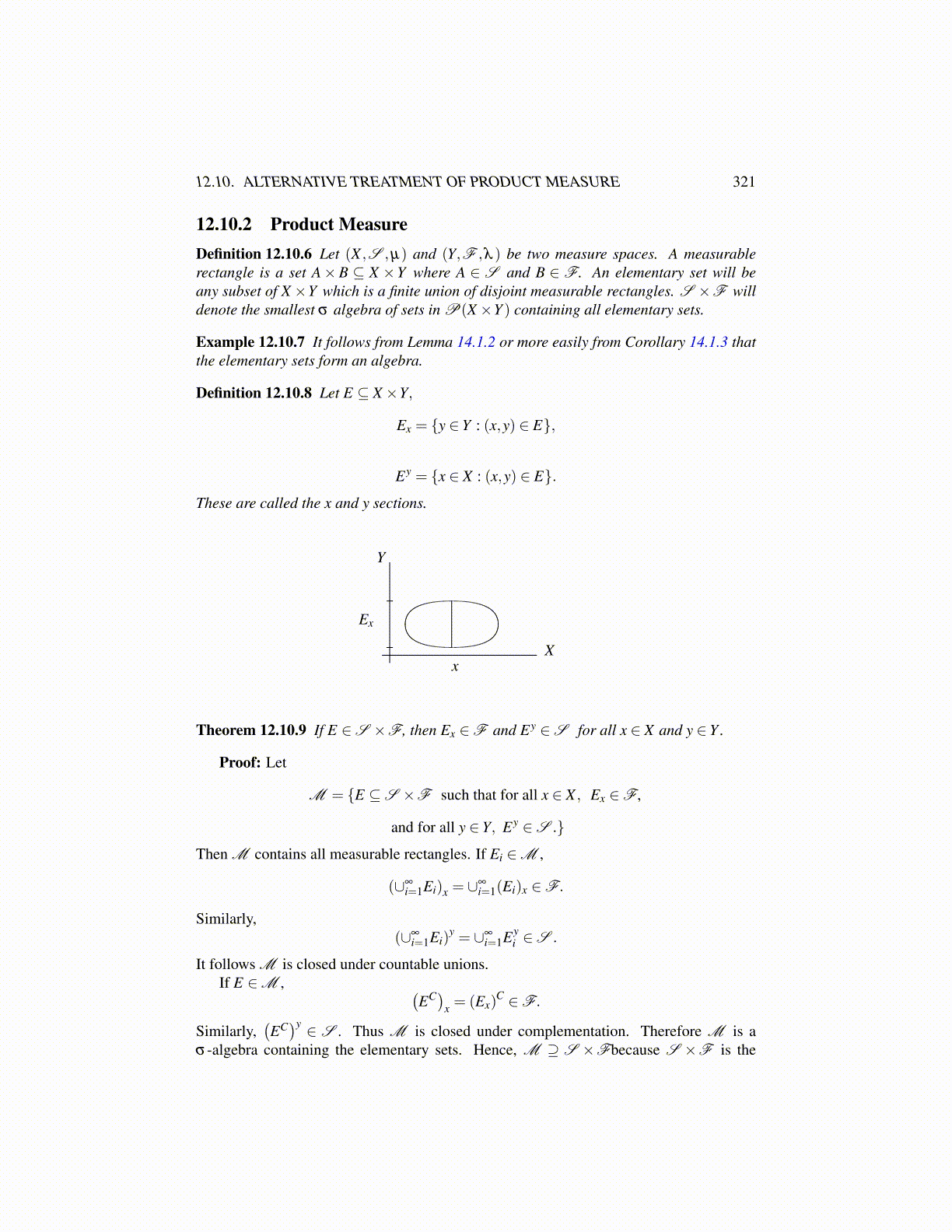
12.10. ALTERNATIVE TREATMENT OF PRODUCT MEASURE 321
12.10.2 Product MeasureDefinition 12.10.6 Let (X ,S ,µ) and (Y,F ,λ ) be two measure spaces. A measurablerectangle is a set A×B ⊆ X ×Y where A ∈ S and B ∈ F. An elementary set will beany subset of X ×Y which is a finite union of disjoint measurable rectangles. S ×F willdenote the smallest σ algebra of sets in P(X×Y ) containing all elementary sets.
Example 12.10.7 It follows from Lemma 14.1.2 or more easily from Corollary 14.1.3 thatthe elementary sets form an algebra.
Definition 12.10.8 Let E ⊆ X×Y,
Ex = {y ∈ Y : (x,y) ∈ E},
Ey = {x ∈ X : (x,y) ∈ E}.
These are called the x and y sections.
xX
Y
Ex
Theorem 12.10.9 If E ∈S ×F, then Ex ∈F and Ey ∈S for all x ∈ X and y ∈ Y .
Proof: Let
M = {E ⊆S ×F such that for all x ∈ X , Ex ∈F,
and for all y ∈ Y, Ey ∈S .}
Then M contains all measurable rectangles. If Ei ∈M ,
(∪∞i=1Ei)x = ∪
∞i=1(Ei)x ∈F.
Similarly,(∪∞
i=1Ei)y = ∪∞
i=1Eyi ∈S .
It follows M is closed under countable unions.If E ∈M , (
EC)x = (Ex)
C ∈F.
Similarly,(EC)y ∈ S . Thus M is closed under complementation. Therefore M is a
σ -algebra containing the elementary sets. Hence, M ⊇ S ×Fbecause S ×F is the